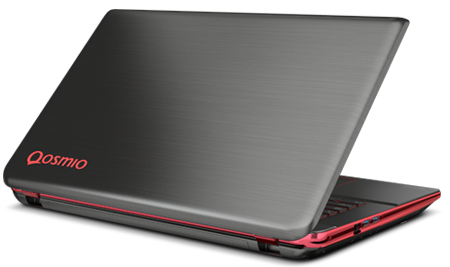ICub laptop: Difference between revisions
Jump to navigation
Jump to search
m (→Operating system installation: take note of a couple of unresolved issues) |
|||
| Line 18: | Line 18: | ||
In the Windows 8 preferences, configure the power button to really turn off the machine (as opposed to suspend). In the BIOS, activate CSM instead of UEFI. Now it is possible to boot from a Linux DVD. | In the Windows 8 preferences, configure the power button to really turn off the machine (as opposed to suspend). In the BIOS, activate CSM instead of UEFI. Now it is possible to boot from a Linux DVD. | ||
== Open issues == | |||
* brightness: fn+F2 does not work, fn+F3 does not work and hibernates the machine | |||
* shutdown does not work | |||
== Network == | == Network == | ||
Revision as of 20:22, 16 January 2015
This laptop is used to control the iCub robot.

Note: this laptop replaces Chico3, which was used during 2009-2014.
Specifications
- processor: 4 x i7-4700MQ @ 2.40-3.40 GHz
- memory: 32GB
- graphics card: Nvidia GeForce GTX 770M with CUDA and 3072MB of memory; onboard card HD 4600
Setup
Ubuntu LTS Desktop, 64-bit. Computer name: icub-laptop.
Operating system installation
In the Windows 8 preferences, configure the power button to really turn off the machine (as opposed to suspend). In the BIOS, activate CSM instead of UEFI. Now it is possible to boot from a Linux DVD.
Open issues
- brightness: fn+F2 does not work, fn+F3 does not work and hibernates the machine
- shutdown does not work
Network
Additional software
Nvidia graphics card
YARP and iCub
Customization
Passwordless connections
# only need to it once; use default choices ssh-keygen -t rsa
# for each machine you want to connect to, e.g., pc104 ssh-copy-id -i /home/icub/.ssh/id_rsa.pub icub@pc104
Launcher icons
Install gnome-panel then use gnome-desktop-item-edit to create/edit launcher icons on the Desktop.
For example, to create a launcher for icub-cluster.py, do
gnome-desktop-item-edit ~/Desktop/cluster-manager.desktop
and select:
Type: Application // <-- runs the command without showing any terminal; use "Application in Terminal" to show it Name: icub-cluster // <-- put your preferred icon name here Command: icub-cluster.py vislab-cluster.xml Comment: Launch iCub cluster manager (yarpserver and yarprun)